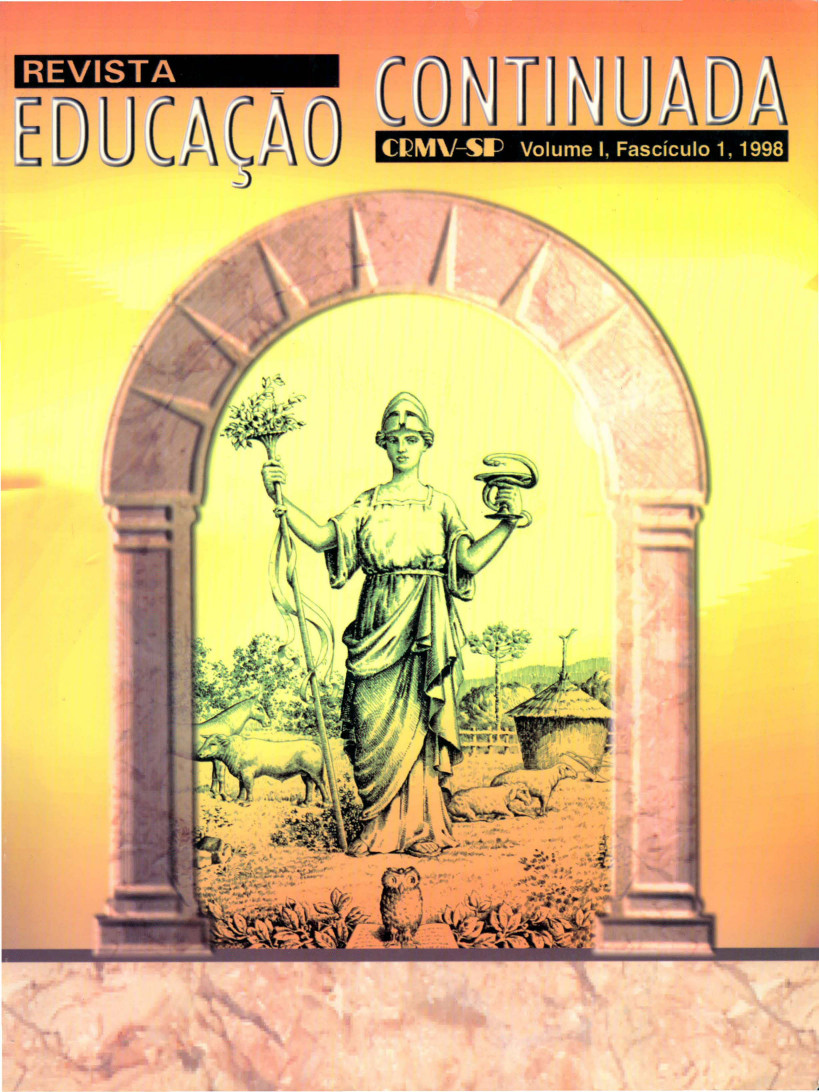Veterinary conditions and management evaluation of small brazilian cats in captivity in state of São Paulo
Main Article Content
Abstract
The species and subspecies of small Brazilian cats are in threatened with extinction and there is little biological and/or veterinary knowledge regarding these animals. The Associação Mata Ciliar (forest land association) has proposed a study with the idea of increasing the information and contributing to the preservation of these small sub-tropical cats. Twenty two zoos are taking part in this study, and 113 animals have been registered of which 93 animals were identified(electronic marking and tattooed), classified zoological and handled: Herpailurus yagouaroundiyaguarundi(16,6,0), Leopardus pardalis- ocelot (18,15,0), Leopardus wiedii- margay, long talled little-spoted cat (3,4,0), Leopardus tigrinus- little-spoted cat (21,10,0). The results obtained showed that approximately 50% of the felines presented clinical problems envolving management such as in the foot, tooth, skin problems and insatisfatory weight. It is possible to conclude that there is a significant need to improve the general management, the quality of enclosures, and the falling birth rate must be reverted, as well as reducing the alarming new birth mortality rate. The cat colonies held breeder and/or zoos provide a fundamental genetic bank from wich these cats can be returned to their natural habitat, as well as there serving as a standard for future comparative studies of these animals in their natural state, thereby assuring the bio-diversity maintenance.
Article Details
1. Autores mantém os direitos autorais e concedem à revista o direito de primeira publicação, com o trabalho licenciado sob a Creative Commons Atribuição-NãoComercial-SemDerivações 4.0 Internacional
2. Autores têm autorização para assumir contratos adicionais separadamente, para distribuição não-exclusica da versão do trabalho publicada nesta revista (ex.: publicar em repositório institucional ou como capítulo de livro), com reconhecimento de autoria e publicação inicial nesta revista.
3. Autores têm permissão e são estimulados a publicar e distribuir seu trabalho online (ex.: em repositórios instituicionais ou na sua página pessoal) a qualquer ponto antes ou durante o processo editorial, já que isso pode gerar alterações produtivas, bem como aumentar o impacto e a citação do trabalho publicado (Veja O Efeito do Acesso Livre);
